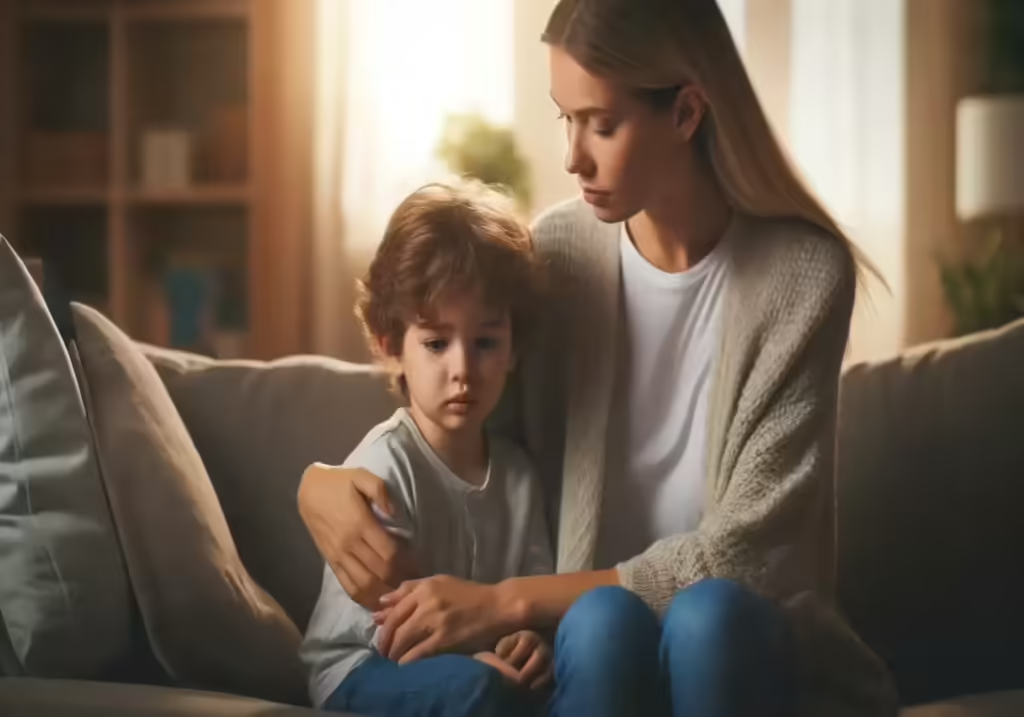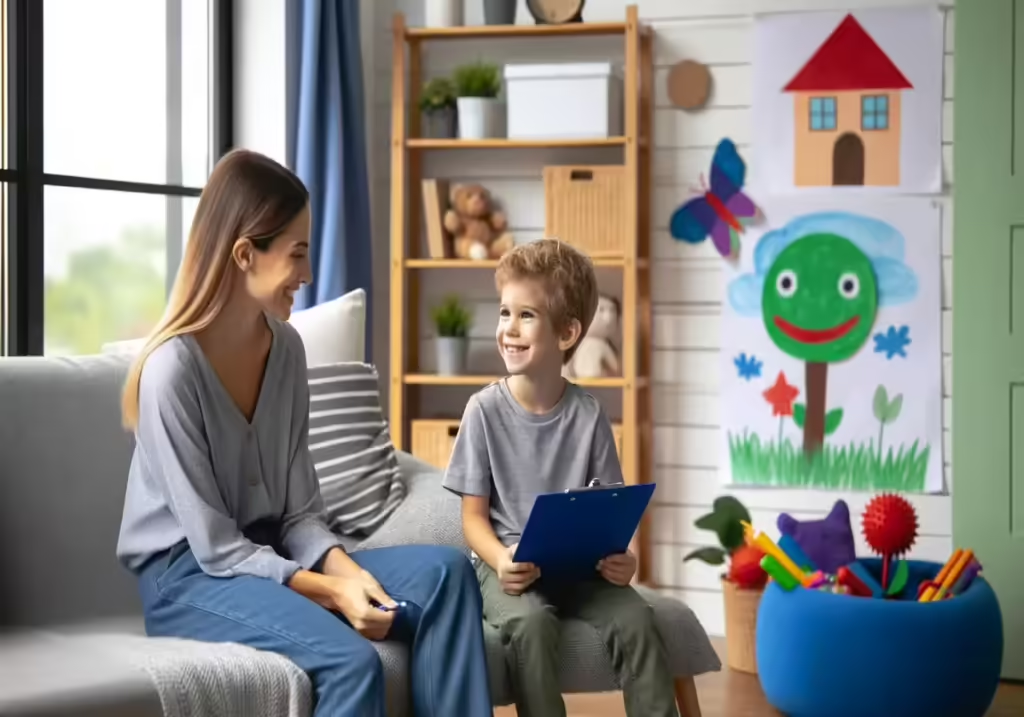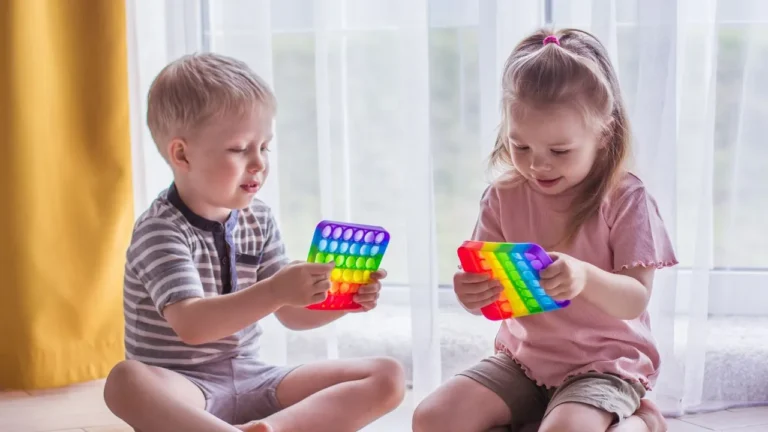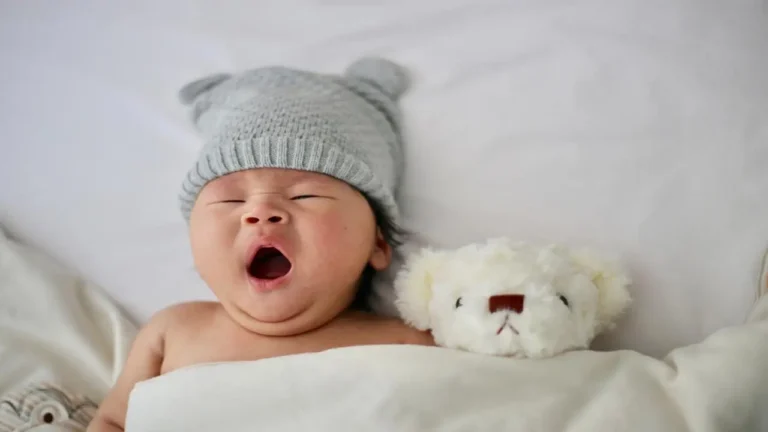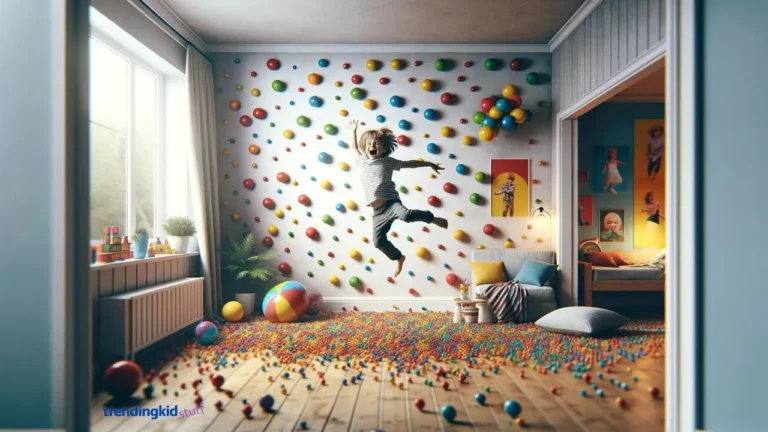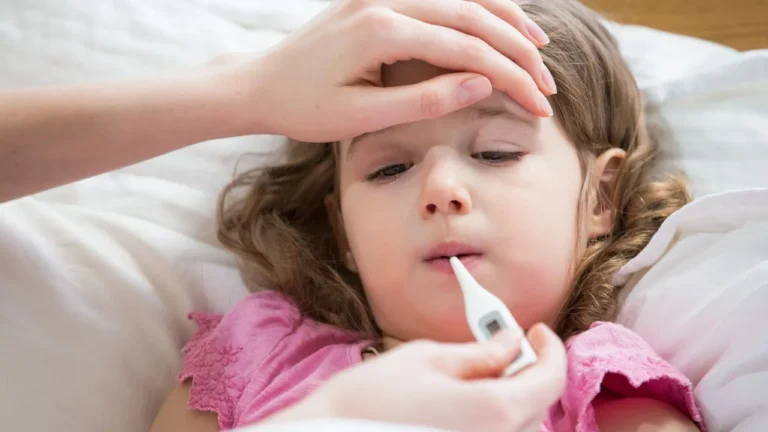How To Understand and Managing Childhood Anxiety
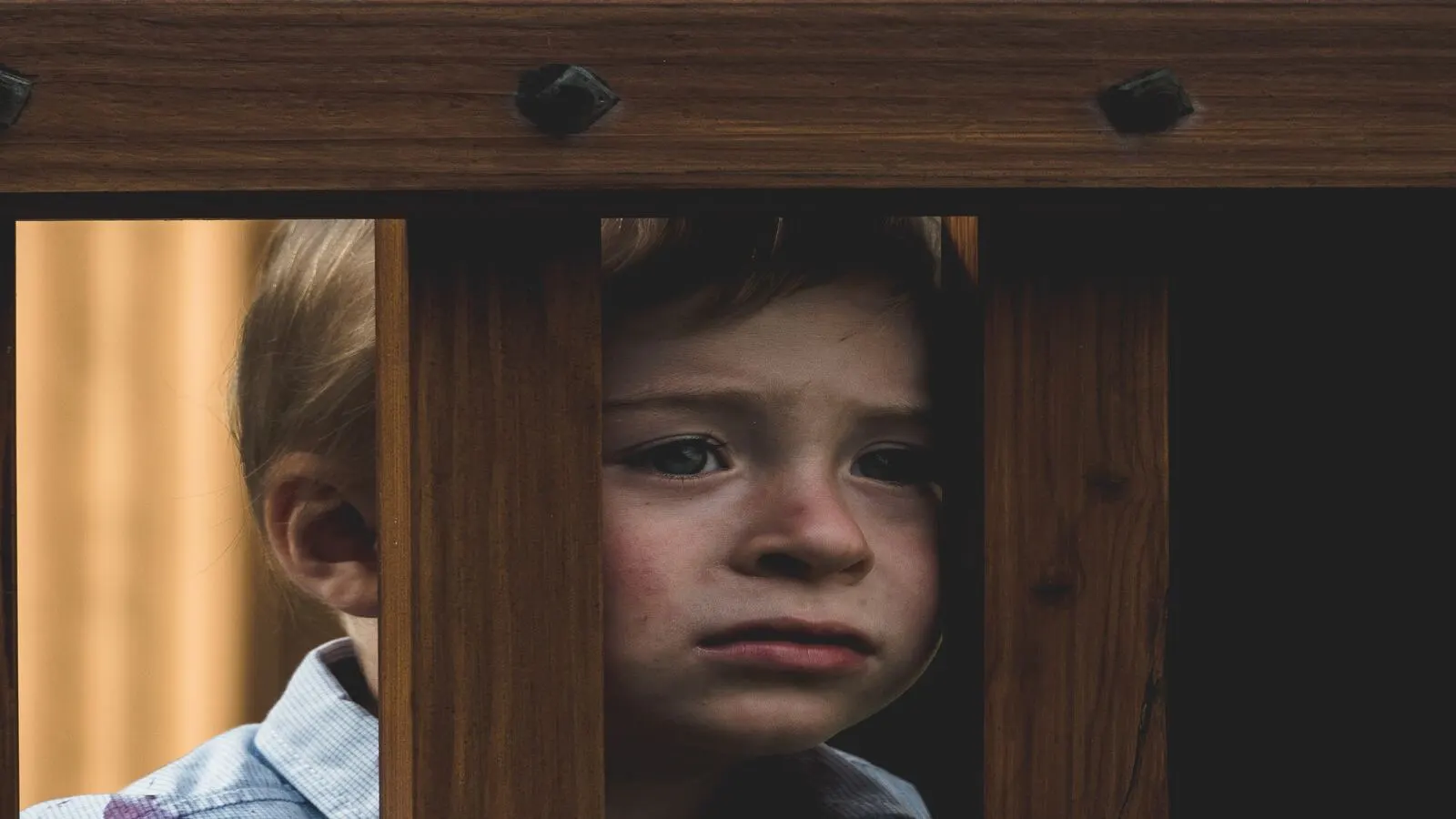
Watching your child grapple with anxiety can be heart-wrenching, especially when everyday activities become sources of fear and worry. Starting a new school can trigger intense anxiety in children. Visiting the doctor can also be a cause for such anxiety. Even staying over at a friend’s house can be unsettling.
These feelings can become overwhelming. When they start disrupting your child’s life, it might be more than just a phase. It could be an anxiety disorder.
Children and teens frequently face mental health challenges like anxiety and depression, leading to severe fear and distress. These conditions often manifest physically, causing symptoms such as stomachaches, trouble breathing, and dizziness.
Recognizing and managing these symptoms early is essential to safeguarding your child’s mental and emotional well-being. By understanding the nuances of anxiety, you can better support your child through these tough times and help them thrive.
Definition and Overview of Childhood Anxiety
Childhood anxiety is a psychological condition where a child may experience intense fear, worry, or nervousness. This can be about specific things or situations, or it can be a more general sense of unease.
It is normal to experience anxiety to an extent. However, when anxiety becomes persistent, it may start affecting a child’s daily activities. In such cases, it may be diagnosed as an anxiety disorder.
Importance of Addressing Anxiety in Children
Addressing an anxious child is vital for several reasons. Firstly, untreated anxiety can lead to more severe mental health issues, including depression. It can impact a child’s academic performance, social interactions, and overall quality of life.
Early intervention can help children learn to manage their anxiety, promoting resilience and healthy coping mechanisms.
The Root of Childhood Anxiety
Exploring the Causes of Anxiety in Children
Anxiety in children can be caused by a variety of factors. It’s often a combination of genetics, environmental factors, and life events. Understanding these causes can help parents and caregivers provide the right support and get professional help if needed.
Signs of Anxiety in Children: Recognizing the Red Flags
Anxiety in children can manifest in various ways. This makes it crucial for parents and caregivers to be attuned to the subtle signs and signals. While some anxiety is a normal part of childhood development, persistent and excessive worry can indicate a deeper issue.
Recognizing the red flags early allows for timely intervention and support, fostering a child’s emotional well-being and resilience.
Physical Symptoms:
Emotional Symptoms:
Behavioral Symptoms:
Importance of Early Recognition:
Recognizing these signs early is crucial for providing timely support and intervention. It’s important to consult with a healthcare professional if you notice several of these symptoms in your child. You may also consult a mental health specialist.
They can assess your child’s specific needs and recommend appropriate treatment options, such as therapy, counseling, or relaxation techniques. Early intervention can significantly improve outcomes and help children develop healthy coping mechanisms for managing anxiety and building resilience.
Research and Resources:
Understanding the signs of anxiety in children is crucial. Seeking professional help when needed is also important. Parents and caregivers can play a vital role in supporting their children’s emotional well-being. They help foster a healthy and resilient future.
Common Anxiety Disorders in Children
There are several types of anxiety disorders that children can experience, including:
Separation Anxiety Disorder
Separation anxiety is common in younger children. It’s characterized by excessive fear or worry about being separated from those to whom the child is attached. This could involve worrying about harm coming to their loved ones or fear of getting lost or kidnapped.
Social Anxiety Disorder
Older children and teenagers tend to worry more about school or have social anxiety. Social anxiety disorder involves a fear of social situations. Children with this disorder may refuse to talk in social situations. They may have an intense fear of interacting with others. They might also fear being judged or embarrassed.
Specific Phobias
Specific phobias involve an extreme fear of a specific thing or situation. Examples include spiders, heights, or going to the doctor. The fear is out of proportion to the actual danger posed by the feared object or situation.
Panic Disorder
Panic disorder involves sudden, repeated episodes of intense fear, also known as panic attacks. These attacks can involve physical symptoms like chest pain, heart palpitations, or shortness of breath. Dizziness or abdominal distress are also possible. These are common child anxiety symptoms.
Seeking Professional Help for Anxiety
If your child’s anxiety is not improving or is worsening, consider seeking professional help. Also, seek help if their anxiety is affecting school, family life, or friendships. A healthcare professional can provide a proper diagnosis and guide you toward appropriate treatment options.
Diagnostic Process and Evaluation
The diagnostic process for anxiety disorders in children usually involves a comprehensive evaluation. This may include a physical examination. It also involves interviews with the child and parents.
Additionally, questionnaires or rating scales are used to assess the child’s thoughts, feelings, and behaviors. The NHS is a good place to start for professional help. They provide mental health services that focus on the needs of children and young people.
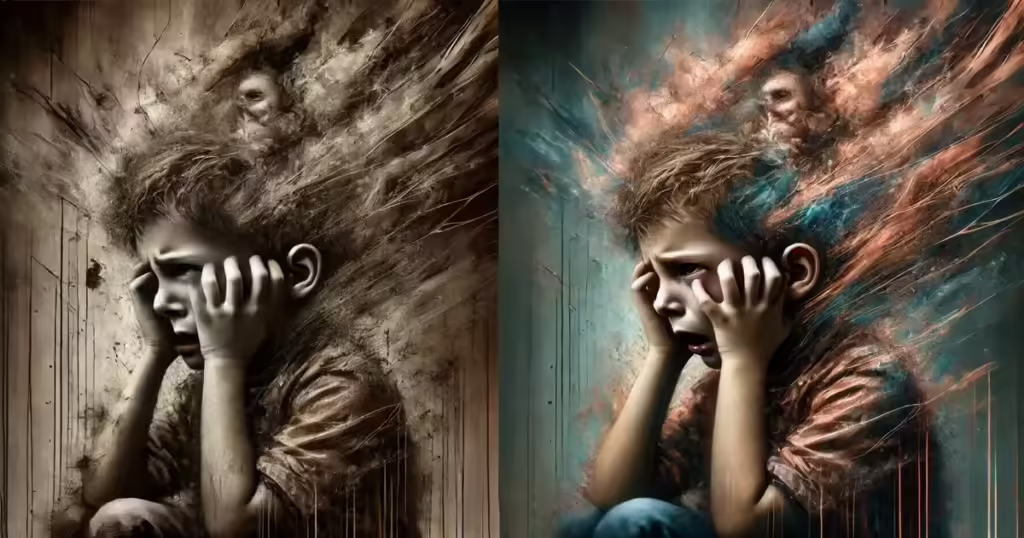
how to help a child with anxiety
Creating a supportive environment is crucial in helping your child manage anxiety. This involves open communication, active listening, and establishing routines and structure.
Open Communication and Active Listening
Talk to your child about their anxiety or worries. Encourage them to express their feelings and reassure them that it’s okay to feel anxious. Active listening involves giving your full attention, showing empathy, and validating their feelings.
Establishing Routines and Structure
Routines and structure can provide a sense of security and predictability for children, which can help ease anxiety. This could involve regular meal times, a consistent bedtime routine, and clear expectations about homework and chores.
Techniques and Strategies for Anxiety Management
Several techniques and strategies can help children manage their anxiety. These include relaxation exercises, cognitive-behavioral therapy techniques, and gradual exposure.
Relaxation Exercises and Deep Breathing
Relaxation exercises such as deep breathing, progressive muscle relaxation, and guided imagery can help reduce feelings of anxiety. These techniques can help children learn to relax their bodies and calm their minds.
Cognitive-Behavioral Therapy (CBT) Techniques
Cognitive-behavioral therapy (CBT) is a type of therapy. It can help children manage their anxiety by changing the way they think. It also helps by modifying their behavior. It involves identifying negative thought patterns and learning to replace them with more positive, realistic thoughts.
Gradual Exposure and Desensitization
Gradual exposure involves slowly exposing the child to the situation or object they fear. It is done repeatedly, in a safe and controlled way. This can help them learn to face their fears and reduce their anxiety over time.

Involving Professionals in Treatment
Therapeutic interventions for anxiety in children can include cognitive-behavioral therapy (CBT), play therapy, and family therapy. These approaches can help children understand their anxiety, develop coping strategies, and improve their ability to function and communicate.
Medication Options for Severe Anxiety Cases
In some cases, when the anxiety is severe or does not improve with talking therapies, medication may be considered. This is usually prescribed by doctors who specialize in child and adolescent mental health. It’s important to discuss the potential benefits and risks with the healthcare provider.
Addressing Specific Types of Anxiety in Children
Separation Anxiety: Causes and Coping Strategies
Separation anxiety is common in younger children. It can be caused by factors such as a change in the environment. Examples include starting school or moving to a new area.
It can also be due to a significant life event, such as the death of a loved one. Coping strategies can include gradual exposure to the situation causing anxiety, providing reassurance, and maintaining a consistent routine.
Social Anxiety: Nurturing Social Skills and Confidence
Social anxiety can cause children to fear social situations, leading to avoidance and distress. To help them overcome this, it’s important to nurture social skills and confidence in children. This can be done through social skills training, role-playing, and encouraging participation in social activities.
Phobias: Understanding and Overcoming Specific Fears
Phobias involve an extreme fear of a specific thing or situation. It is important to understand the specific fear. Gradually exposing the child to it safely and controlled can help them overcome their phobia. Cognitive-behavioral therapy can also be effective in treating phobias.
Panic Disorder: Managing Panic Attacks and Anxiety Episodes
Panic disorder involves sudden, repeated episodes of intense fear, also known as panic attacks. These attacks can be scary for both the child and the parents. It’s important to seek professional help if your child is experiencing panic attacks. Treatment may involve cognitive-behavioral therapy and, in some cases, medication.
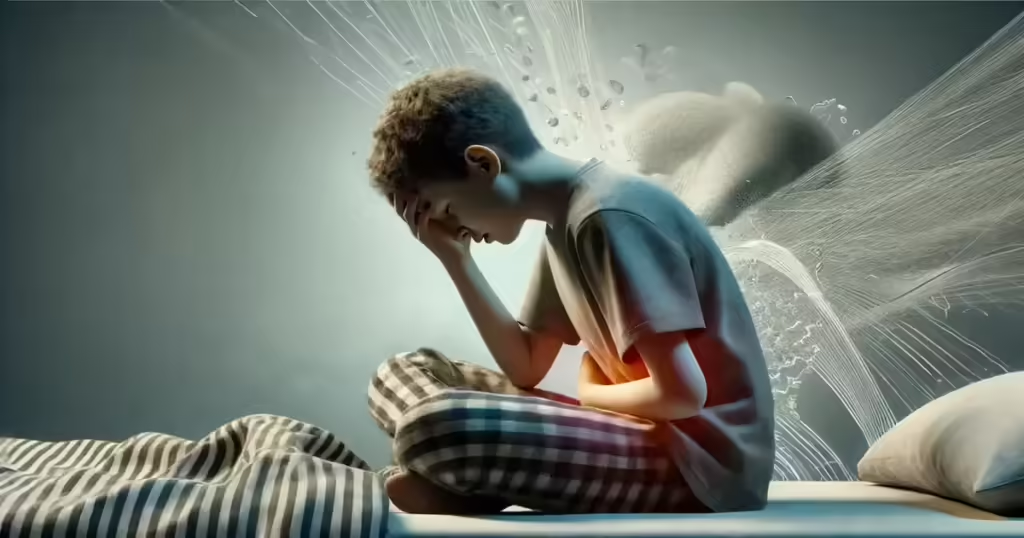
Supporting Children’s Mental Health and Well-being
Promoting Healthy Coping Mechanisms
Promoting healthy coping mechanisms involves teaching children strategies to manage their anxiety. This can include relaxation techniques, problem-solving skills, and positive self-talk. Encouraging children to engage in enjoyable activities can also help reduce anxiety and promote well-being.
Teaching Stress Management and Resilience Skills
Teaching children stress management and resilience skills can help them cope with anxiety. This can involve teaching them to recognize and manage stress, develop a positive outlook, and build strong relationships.
Encouraging Physical Activity and Mindfulness
Physical activity can help reduce anxiety and improve mood. Encourage your child to engage in regular physical activity. They can try playing a sport, dancing, or even just going for a walk. Mindfulness, which involves focusing on the present moment, can also help reduce anxiety and promote relaxation.
Collaboration with Schools and Educators
Collaborating with schools and educators can help support a child’s mental health. This can involve communicating with teachers about the child’s anxiety. It includes working together to create a supportive school environment. Implementing accommodations may be needed.
Involving Parents and Caregivers in the Recovery Process
Parents and caregivers play a crucial role in a child’s recovery process. This involves providing emotional support. They help the child implement coping strategies. They also work with healthcare professionals to manage the child’s anxiety.
Final Thoughts
Anxiety in children is a serious issue, but with understanding, support, and timely intervention, children can thrive. Remember, every child is unique, so finding the right approach is key.
Early intervention is crucial for helping children develop coping mechanisms and lead fulfilling lives.
Let’s break the stigma surrounding mental health and create a supportive environment for our children.
Take Action Today:

